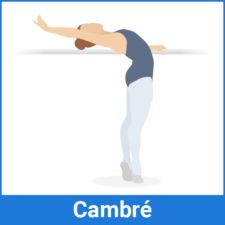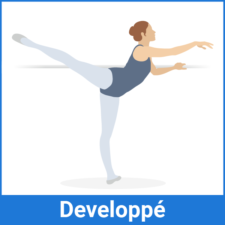Ballet Basics: What Rehab Professionals Should Know When Treating Dancers

All dance forms require mastery of alignment and stabilization during drastically different types of postures and movements. To develop effective injury prevention and treatment strategies, healthcare practitioners must understand the vocabulary, biomechanics, and combinations specific to each technique.
Ballet requires notable physical capabilities, including extreme joint range of motion, muscle flexibility, turnout of the lower extremity, and precarious balances.
Why Should I Learn Ballet Positions and Vocabulary?
If a baseball pitcher injures his shoulder, you need to know the mechanics and phases of overhand throwing. If a dancer comes to you with posterior ankle pain in a relevé, you need to know what a relevé entails.
 Ballet has ten basic French terms that you should recognize. These include:
Ballet has ten basic French terms that you should recognize. These include:
- The five positions of the feet (first through fifth position)
- Plié (demi and grand plié—a bend at the knees)
- Cambré (to bend at the waist)
- Relevé (to rise onto the balls of the feet or toes)
- Tondu (a stretch of the pointed foot)
- Passé (to pass from one position to another, or retiré)
- Developpé (a large lower extremity movement in the air)
- Grand battement (to kick)
- En tournant (to turn)
- Sauté (to jump)
Understanding the biomechanics involved in performing these movements will assist you in your evaluation.
 8 Differences Between Ballet Dancers and Other Athletes
8 Differences Between Ballet Dancers and Other Athletes
While there’s no question that ballet dancers are athletes, their focus is considerably different than that of a baseball pitcher or a quarterback. Adaptations you’ll want to be aware of include:
- Concentrating on the deep six turnout muscles, part of the dancer’s “core”
- Working in the plane of “hip-tion,” as opposed to scaption
- Strengthening iliopsoas in the shortened range for high limb developpé
- Isolating abdominals and core stabilizers from hip flexors
- Working in dance-specific functional positions during rehabilitation
- Preparing the spine for extension work
- Eccentric and jump training for Achilles tendinitis, ankle sprains, and the like
- Understanding a five-phase functional progression specific to ballet and the particular injury
Common Injuries in Ballet Dancers
Some of the injuries commonly seen in dancers include:
- Sacroiliac joint instability
- Hip labral tears
- Iliopsoas overuse
- Os trigonum posterior impingement
- Flexor hallucis longus (FHL) tendinitis
- Hallux rigidus and valgus
Clinicians who wish to better understand the anatomy and biomechanics involved in the nine basic ballet positions and movements should complete the MedBridge course, “Ballet Technique: Vocabulary, Mechanics, Stressors, & Modifications.” This course will give you the information needed to improve evaluation of technique alignment and correction. A ballet-based five-phase progression will allow you to evaluate and treat these athletes with more confidence.









